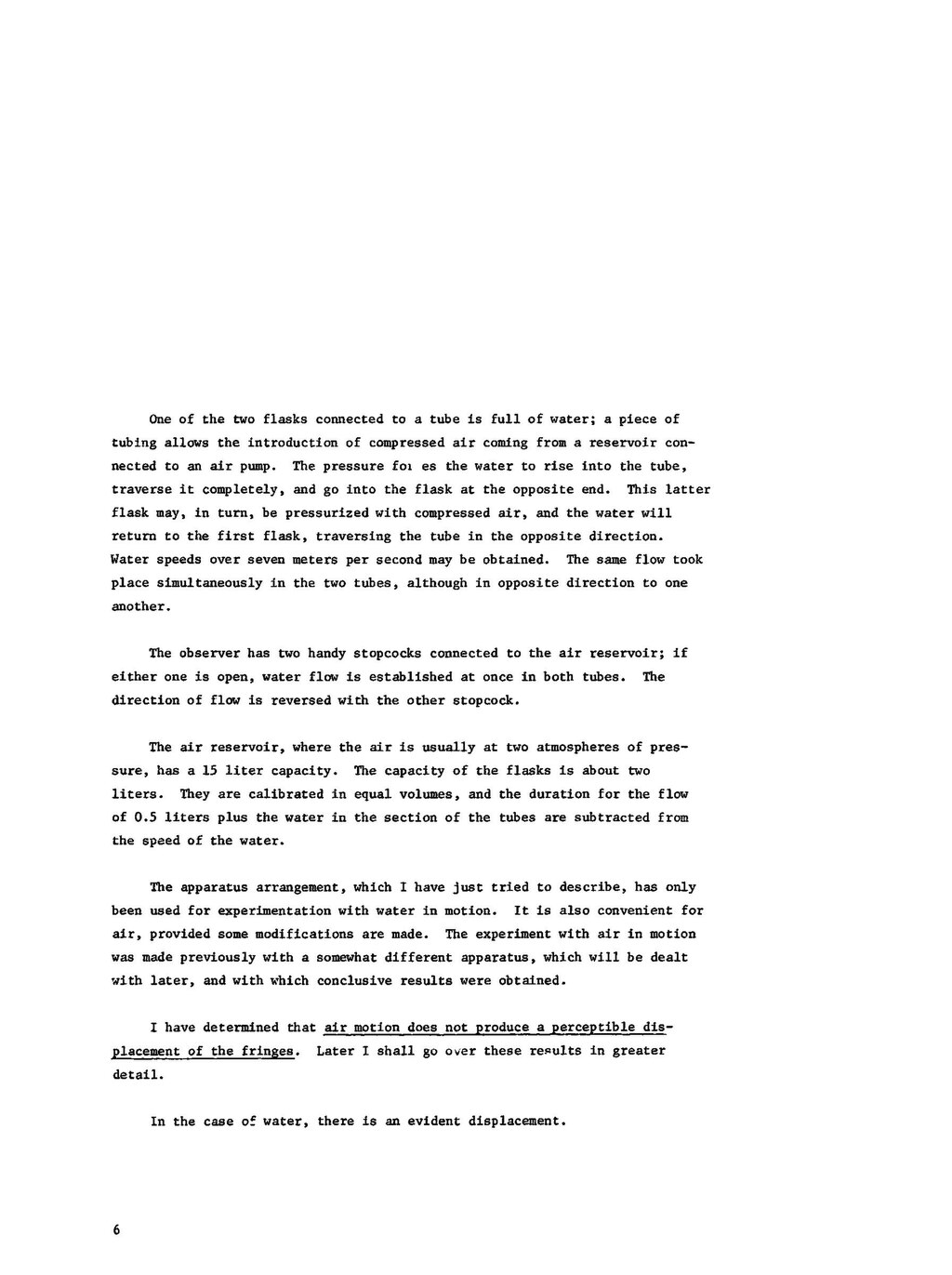One of the two flasks connected to a tube is full of water; a piece of tubing allows the introduction of compressed air coming from a reservoir connected to an air pump. The pressure forces the water to rise into the tube, traverse it completely, and go into the flask at the opposite end. This latter flask may, in turn, be pressurized with compressed air, and the water will return to the first flask, traversing the tube in the opposite direction. Water speeds over seven meters per second may be obtained. The same flow took place simultaneously in the two tubes, although in opposite direction to one another.
The observer has two handy stopcocks connected to the air reservoir; if either one is open, water flow is established at once in both tubes. The direction of flow is reversed with the other stopcock.
The air reservoir, where the air is usually at two atmospheres of pressure, has a 15 liter capacity. The capacity of the flasks is about two liters. They are calibrated in equal volumes, and the duration for the flow of 0.5 liters plus the water in the section of the tubes are subtracted from the speed of the water.
The apparatus arrangement, which I have just tried to describe, has only been used for experimentation with water in motion. It is also convenient for air, provided some modifications are made. The experiment with air in motion was made previously with a somewhat different apparatus, which will be dealt with later, and with which conclusive results were obtained.
I have determined that air motion does not produce a perceptible displacement of the fringes. Later I shall go over these results in greater detail.
In the case of water, there is an evident displacement.
6
